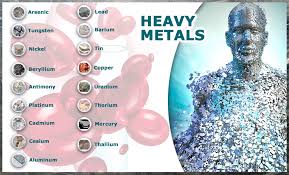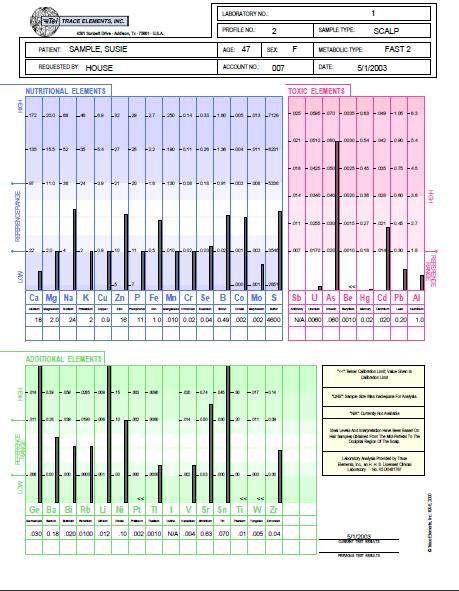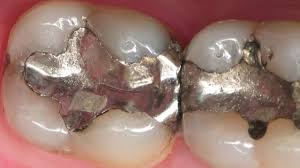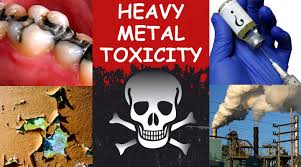 TOXIC METAL TESTING
TOXIC METAL TESTING
Hair Mineral Analysis: Unveiling Nutritional Deficiencies and Heavy Metal Toxicity
Introduction
Hair mineral analysis is an increasingly popular diagnostic tool used to assess nutritional deficiencies and heavy metal toxicity within the body. This non-invasive technique analyzes the mineral content and trace elements present in the hair, providing valuable insights into an individual’s overall health status. In this article, we explore the applications of hair mineral analysis, its advantages over other tests, and its significance in detecting nutritional deficiencies and heavy metal toxicity.
Understanding Hair Mineral Analysis: Hair mineral analysis involves collecting a small sample of hair and analyzing its mineral composition, including essential minerals (such as calcium, magnesium, zinc, and iron) and potentially toxic heavy metals (such as lead, mercury, cadmium, and arsenic). The concentrations of these elements reflect the body’s mineral status and potential exposure to environmental toxins.
Detecting Nutritional Deficiencies:
- Comprehensive Nutrient Assessment: Hair mineral analysis provides a comprehensive assessment of mineral imbalances and deficiencies. By evaluating the levels and ratios of essential minerals, it can indicate potential nutrient deficiencies that may contribute to various health issues. This information guides targeted dietary and supplementation recommendations to restore optimal nutrient balance.
- Long-Term Nutrient Status: Hair mineral analysis reflects the body’s mineral status over an extended period, offering insights into long-term nutrient deficiencies. Blood tests, on the other hand, provide a snapshot of the body’s mineral levels at the time of testing and may not fully capture long-term imbalances.
- Mineral Interactions: Hair mineral analysis reveals interactions between minerals and their impact on overall health. Imbalances or ratios between minerals can indicate potential issues with absorption, utilization, or competition between minerals, which may impact health outcomes. Understanding these interactions aids in tailoring interventions to address specific imbalances.
Detecting Heavy Metal Toxicity
- Environmental Exposure Assessment: Hair mineral analysis serves as a valuable tool for assessing heavy metal toxicity resulting from environmental exposure. Hair samples can accumulate heavy metals from various sources, providing insights into chronic or ongoing exposure. This information helps identify potential sources of heavy metals and guide strategies for reducing exposure.
- Non-Invasive and Convenient: Hair mineral analysis offers a non-invasive and convenient method for assessing heavy metal toxicity. Unlike blood or urine tests, hair samples can be easily collected without the need for invasive procedures or specialized facilities. This makes it accessible to a wider range of individuals, including children and the elderly.
- Detection of Chronic Exposure: Hair mineral analysis is particularly effective in detecting chronic exposure to heavy metals. Hair samples reflect the accumulation of heavy metals over an extended period, enabling the identification of long-term exposure that may not be apparent through blood or urine tests.
- Potential Early Warning Sign: Hair mineral analysis can potentially serve as an early warning sign for heavy metal toxicity. Elevated levels of certain heavy metals in the hair may indicate ongoing accumulation in the body before symptoms or health issues arise. Early detection allows for prompt intervention and implementation of appropriate detoxification strategies.
Advantages Over Other Tests
- Accessibility and Convenience: Hair mineral analysis is easily accessible and non-invasive. Hair samples can be collected at home or at a healthcare professional’s office, making it convenient for individuals seeking a comprehensive assessment of their nutritional status or heavy metal exposure.
- Cost-Effective: Hair mineral analysis is generally more cost-effective compared to other diagnostic tests. Traditional blood and urine tests can be expensive and may not provide the same comprehensive assessment of mineral imbalances and heavy metal toxicity.
- Reflects Long-Term Status: Hair mineral analysis provides insights into long-term mineral imbalances and heavy metal exposure, offering a more comprehensive view of an individual’s health status compared to single-point-in-time tests.
- Screening Tool: Hair mineral analysis can serve as a screening tool to identify individuals at higher risk of nutritional deficiencies or heavy metal toxicity, enabling early intervention and prevention of potential health issues.
Conclusion
Hair mineral analysis offers a valuable diagnostic approach for assessing nutritional deficiencies and heavy metal toxicity. By analyzing the mineral content present in the hair, this non-invasive technique provides comprehensive insights into an individual’s long-term nutrient status and exposure to potentially harmful heavy metals. Its advantages, including accessibility, convenience, cost-effectiveness, and ability to detect chronic exposure, make it a valuable tool for optimizing health and guiding targeted interventions. Collaborating with healthcare professionals experienced in interpreting hair mineral analysis results ensures accurate assessment and personalized recommendations for restoring nutrient balance and reducing heavy metal toxicity.
Do-It-Yourself Hair Test
The general public can order the hair test online and send their hair sample to us.
As soon as payment is made, we will send the instructions on how to cut the hair, along with the Submittal Form.
We will email you the results which normally take about 3 weeks to receive from the laboratory.
 Articles to Read:
Articles to Read:
The Use of Hair Tests in Clinical Decision-Making
Natural Heavy Metal Chelators: Do They Work?
Using Hair Mineral Analysis to Determine Heavy Metal Toxicity
Videos to Watch:
Dr Georgiou talks on HMD – Heavy Metal Detox – Part 1
Dr Georgiou talks on HMD – Heavy Metal Detox – Part II
Dr Georgiou talks on HMD – Heavy Metal Detox – Part III
Heavy Metal Toxicity and Dental Filling Removal
Warning About Mercury Amalgams

Contact us or book an appointment now.


 TOXIC METAL TESTING
TOXIC METAL TESTING Articles to Read:
Articles to Read:




